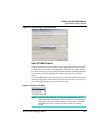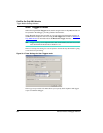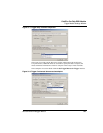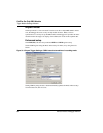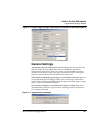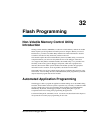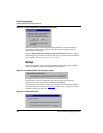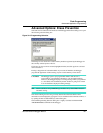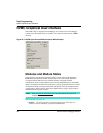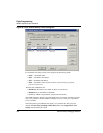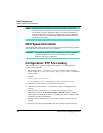
699
Microcontrollers Debugger Manual
32
Flash Programming
Non-Volatile Memory Control Utility
Introduction
Writing to Flash modules, EEPROMs, or other non-volatile memory modules in modern
MCUs requires special algorithms from microprocessor designers. Before you write to
Flash devices, you must erase them. Many Flash devices need initialization to become
accessible; some devices may need write protection removed.
This manual explains the Non-Volatile Memory Control (NVMC) utility, an extension
component that lets you control on-chip Flash devices for all debugger connections.
As it supports many MCUs and Flash modules, the NVMC utility is very flexible. This
flexibility comes from a generic debugger component, which calls a graphical user
interface, then loads an MCU-specific module. The module provides the appropriate
information such as structure, access algorithms, and location for that MCU.
The NVMC utility lists all non-volatile memory devices, indicating their structure, state,
and location. You can change the state (enabled/disabled, blank, programmed, protected/
unprotected) and program data into the modules.
Automated Application Programming
The debugger is able to program an application without making use of the NVMC dialog
box/GUI, which remains useful for specific operations only. Currently, CodeWarrior IDE
projects created from a series of wizard dialog boxes might be programmed/Flashed
immediately. By default, the debugger prompts a warning dialog box to get user
acceptance before mass erasing, then programming the application.
Use the FLASH-specific command (FLASH NOUNSECURE) described in this chapter to
incorporate device security byte programming in user code.



